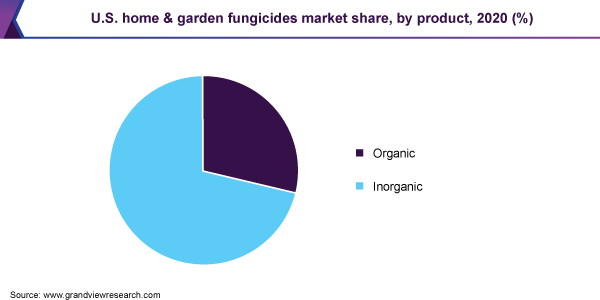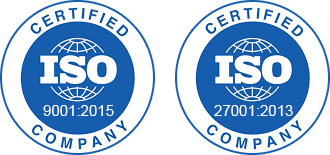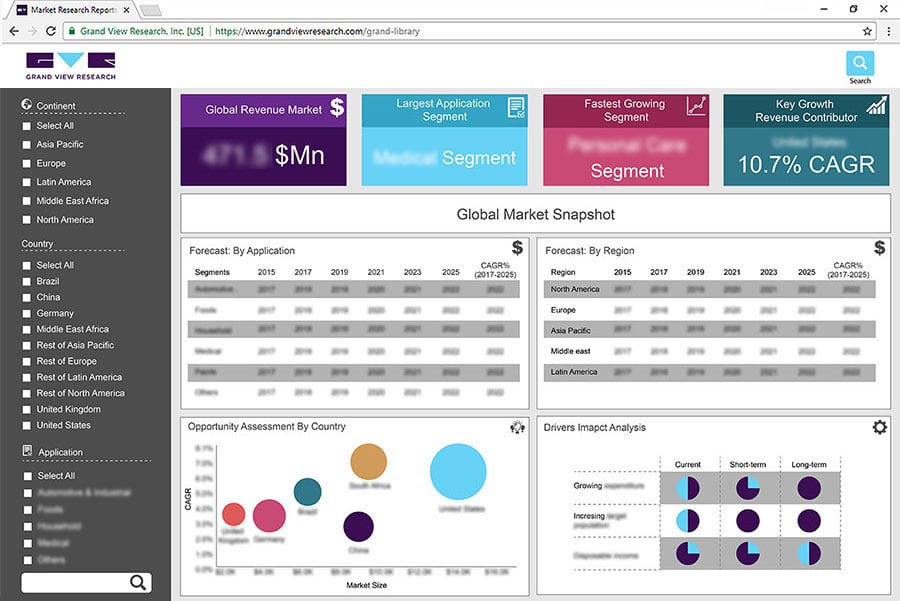- Home
- »
- Homecare & Decor
- »
-
U.S. Home And Garden Fungicides Market Report, 2021-2028GVR Report cover
![U.S. Home And Garden Fungicides Market Size, Share & Trends Report]()
U.S. Home And Garden Fungicides Market Size, Share & Trends Analysis Report By Product (Organic, Inorganic), By Form (Dry, Liquid), By Application (Home Garden, Turf & Ornamentals), And Segment Forecasts, 2021 - 2028
- Report ID: GVR-4-68039-403-5
- Number of Report Pages: 80
- Format: PDF, Horizon Databook
- Historical Range: 2016 - 2019
- Forecast Period: 2021 - 2028
- Industry: Consumer Goods
Report Overview
The U.S. home and garden fungicides market size was valued at USD 372.0 million in 2020 and is expected to expand at a compound annual growth rate (CAGR) of 5.0% from 2021 to 2028. The demand for landscaping projects, such as water fountains, plants, and gazebos, is projected to drive the demand for home and garden fungicides. Furthermore, growing activities for transforming commercial and residential outdoor spaces into areas, such as lawns, outdoor kitchens, and party spots, for entertainment and leisure are boosting the growth of the market. Consumers are adopting larger and more varied vegetation in their lawns and gardens, necessitating the use of home and garden fungicides in order to maintain healthy growth.

Landscaping makes the finest use of available space in a highly attractive way. It involves forming the land as desired to make the best use of a location's natural features. Landscaping involves selecting and growing plants that best fit the design. As a result, increased landscaping activities and investments in residential homes are some of the major factors driving the market.
With the rise in housing and commercial construction activities, the market for home and garden fungicides is likely to witness growth in the interior decoration industry as gardening and landscaping are among the leading segments. The rising demand for hardscaping is also projected to bode well for the overall market growth. Hardscaping is witnessing increased acceptance due to the growing demand for paving blocks and stamped concrete plank pavers made up of natural stones and porcelain. These products help prevent water runoff and flooding issues.
The high popularity of playing golf in the U.S. is also benefitting the market for home and garden fungicides through the increased number of golf courses in the country. According to a blog post by Golf Span, the U.S. accounts for 43% of the global golf courses. Some of the most popular states for a variety of golf courses are Florida, Texas, California, Ohio, and New York. With the rising number of golf courses in the country arises the need for effective fungicides, thereby expanding the scope of the market.
Amid the covid-19 pandemic, with the U.S. observing quarantine orders and consumers in the country avoiding human contact, market players are grappling to become accustomed to the change in the system. With people spending more time at home, a number of them are drawn toward gardening as a hobby. An increased number of people turning toward gardening and yard work during the pandemic has positively influenced the market growth.
Form Insights
The liquid segment dominated the market with a share of around 60.0% in 2020 owing to the prominent penetration rate of liquid fungicides. Benefits such as ease of usage, even distribution on the target area, and the ability to reach corners are responsible for the strong demand for liquid fungicides. Companies in the market are also trying to boost demand by introducing new products. For instance, in September 2020, a new low-dose liquid copper bactericide and fungicide were approved by the California Department of Pesticide Regulation (CDPR). Registered under the name Cop-Kleen on August 3, the new fungicide is manufactured by Earth Science Labs (ESL). It is approved for use on 94 crops, including walnuts, almonds, and pistachios.
The dry segment is expected to expand at a CAGR of 4.3% from 2021 to 2028. The adoption of dry fungicides is increasing among consumers as they are resilient and difficult to wash off, and the rain has little effect on them. This results in higher efficacy of the product and cost savings.
Application Insights
The turf and ornamentals segment dominated the U.S. market by accounting for over 66.0% share in 2020. This high share is attributed to Americans spending more than USD 36 billion every year on lawn care, four-and-a-half times more than the annual budget of the Environmental Protection Agency. The grass is the single largest irrigated agricultural crop in America, more than corn, wheat, and fruit orchards combined. A NASA-led study in 2005 found that there were 63,000 square miles of turfgrass in the U.S., covering an area larger than Georgia. This is expected to generate significant demand for fungicides in the coming years.
With the growing number of golf courses, the demand for fungicides is also increasing; hence, companies are focusing on launching products specifically formulated for fungal infections that are generally detected on golf courses. For instance, in December 2019, FMC Professional Solutions, a business unit of FMC Corporation, launched Rayora fungicide and announced that the fungicide has been granted EPA registration.
The home garden segment is projected to expand at a CAGR of 4.2% over the forecast period. The growing trend of home gardening and increased expenditure on garden maintenance are the key factors boosting the growth of this segment. According to the National Gardening Association (NGA), in 2017, 35% of households in the U.S. grow food either at home or in a community garden. This means that about 2 million more families were involved in gardening, up 200% since 2008.
Product Insights
The inorganic product segment dominated the market with a share of over 70.0% in 2020. This is attributed to the fact that inorganic fungicides emerged as the prominent choice among consumers. The growing consumption of fruits and vegetables and increasing adoption of advanced farming techniques, along with prominent demand for high-value crops, are some of the factors that have been driving the demand for inorganic fungicides. In modern farming, inorganic fungicides played an effective role in protecting crops from fungal diseases, thus boosting the segment growth.
The organic product segment is projected to expand at the highest CAGR of 6.7% from 2021 to 2028.Increasing demand among consumers for organic food crops, the stringent government regulations against the use of synthetically produced crops, and the growing awareness among consumers about the benefits of adopting organic fungicides are some of the factors that are projected to drive the segment.

Organic fungicides are more efficient in terms of their mode of action than conventional ones. They act against the pathogenic fungi by parasitism, antibiosis, or competition, thus they are high in demand. Additionally, new product launches and partnerships were the prominent strategies adopted by key players to capitalize on the strong market potential.
Key Companies & Market Share Insights
The U.S. market is characterized by the presence of various well-established players, along with several promising players. The market players face intense competition as some of them are among the top fungicides manufacturers and have a large customer base and robust supply chain.
The U.S. market is dominated by a few major brands that account for the maximum share in the market. Players have been focusing on launching new products to meet the growing customer demand for turf and landscape fungicides. For instance, in January 2018, Nufarm launched an all-terrain golf course fungicide in sponsorship with Land Rover during the Golf Industry Show (GIS) to attract new customers. Similarly, in May 2019, Syngenta AG launched the Appear II fungicide to control Pythium and anthracnose diseases and improve stress tolerance and turf quality in all seasons. Some prominent players in the U.S. home and garden fungicides market include:
-
Bayer AG
-
Syngenta AG
-
BASF SE
-
Corteva Agriscience
-
Certis USA L.L.C.
-
Central Garden & Pet Company
-
Nufarm
-
Spectrum Brands Holdings, Inc.
-
The ScottsMiracle-Gro Company
U.S. Home And Garden Fungicides Market Report Scope
Report Attribute
Details
Market size value in 2021
USD 386.9 million
Revenue forecast in 2028
USD 547.7 million
Growth Rate
CAGR of 5.0% from 2021 to 2028
Base year for estimation
2020
Historical data
2016 - 2019
Forecast period
2021 - 2028
Quantitative units
Revenue in USD million and CAGR from 2021 to 2028
Report coverage
Revenue forecast, company ranking, competitive landscape, growth factors, and trends
Segments covered
Product, form, application
Country scope
U.S.
Key companies profiled
Bayer AG; Syngenta AG; BASF SE; Corteva Agriscience; Certis USA L.L.C.; Central Garden & Pet Company; Nufarm; Spectrum Brands Holdings, Inc.; The ScottsMiracle-Gro Company
Customization scope
Free report customization (equivalent up to 8 analysts working days) with purchase. Addition or alteration to country & segment scope.
Pricing and purchase options
Avail customized purchase options to meet your exact research needs. Explore purchase options
Segments Covered in the ReportThis report forecasts revenue growth at the country level and provides an analysis of the latest industry trends and opportunities in each of the sub-segments from 2016 to 2028. For the purpose of this study, Grand View Research has segmented the U.S. home and garden fungicides market report on the basis of product, form, and application:
-
Product Outlook (Revenue, USD Million, 2016 - 2028)
-
Organic
-
Inorganic
-
-
Form Outlook (Revenue, USD Million, 2016 - 2028)
-
Dry
-
Liquid
-
-
Application Outlook (Revenue, USD Million, 2016 - 2028)
-
Home Garden
-
Turf & Ornamentals
-
Golf Course
-
Lawn & Landscape
-
Ornamentals
-
-
Frequently Asked Questions About This Report
b. The U.S. home & gardening fungicides market size was estimated at USD 372.0 million in 2020 and is expected to reach USD 386.9 million in 2021.
b. The U.S. home & gardening fungicides market is expected to grow at a compound annual growth rate of 5.0% from 2021 to 2028 to reach USD 547.7 million by 2028.
b. Inorganic fungicide dominated the U.S. home & gardening fungicides market with a share of 71.4% in 2020. This is attributable to the fact that inorganic fungicides emerged as the prominent choice among consumers.
b. Some key players operating in the U.S. home & gardening fungicides market include Certis USA L.L.C.; Central Garden & Pet Company; Nufarm; Spectrum Brands Holdings, Inc.; and The ScottsMiracle-Gro Company.
b. Key factors that are driving the U.S. home & gardening fungicides market growth include high demand for landscaping projects, such as water fountains, plants, and gazebos, growing activities for transforming commercial and residential outdoor spaces into areas such as lawns, outdoor kitchens, and party spots for entertainment and leisure.
Share this report with your colleague or friend.
![gvr icn]()
NEED A CUSTOM REPORT?
We can customize every report - free of charge - including purchasing stand-alone sections or country-level reports, as well as offer affordable discounts for start-ups & universities. Contact us now
![Certified Icon]()
We are GDPR and CCPA compliant! Your transaction & personal information is safe and secure. For more details, please read our privacy policy.
We are committed towards customer satisfaction, and quality service.
"The quality of research they have done for us has been excellent."





